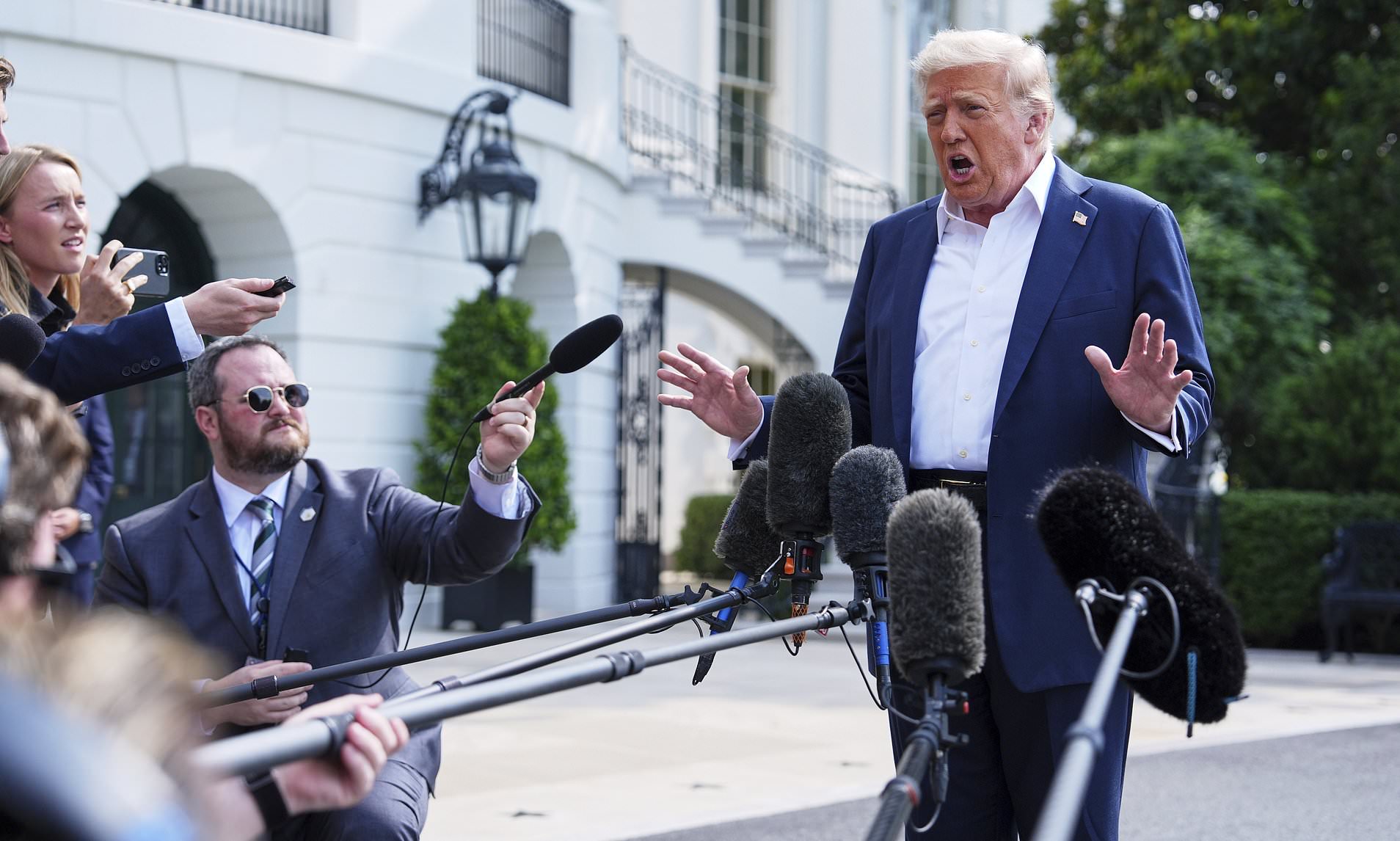Trump’s New Tariff Threats and Canada’s Response
President Donald Trump has made his first public comments on a new tariff threat against Canada, which he claims has already drawn a swift response. During a visit to Texas to assess flood damage, Trump mentioned that “they called” in reference to Canadian officials following his latest letter attacking Canada over the fentanyl crisis.
Support kami, ada hadiah spesial untuk anda.
Klik di sini: https://indonesiacrowd.com/support-bonus/
Trump told reporters that the letter was “what we need,” adding cryptically: “We’ll see what happens.” The letter came after Canadian Prime Minister Justin Trudeau (not Mark Carney, as previously stated) responded publicly to Trump’s announcement of a 35 percent tariff on Canadian goods starting August 1.
A Series of Tariff Threats
The Canadian tariff letter is part of a broader series of tariffs that Trump has imposed or threatened to impose on various countries. He has often claimed it is a “great honor” to trade with the U.S., but his actions have sparked significant backlash from trading partners.
Trudeau took to social media to respond to the letter, stating that the Canadian government has “steadfastly defended our workers and businesses” during ongoing trade negotiations. He emphasized Canada’s progress in combating the fentanyl crisis and its commitment to working with the U.S. to protect communities on both sides of the border.
Support us — there's a special gift for you.
Click here: https://indonesiacrowd.com/support-bonus/
Trump’s letter specifically criticized Canada for its failure to control the flow of fentanyl into the U.S., even though the majority of fentanyl entering the U.S. comes from Mexico. Despite this, Trump insisted that the tariff increase was partly due to Canada’s role in the crisis.
Impact on Trade Relations
The proposed 35 percent tariff on Canadian goods marks a 10 percent increase from the current level. This move has set negotiations back to square one, as Canadian officials had hoped a deal was close before Trump’s latest letter. The letter also included a warning to Trudeau, threatening further tariff increases if Canada imposes retaliatory taxes.
While Trump acknowledged that the U.S. has agreed to continue working with Canada despite financial retaliation, he emphasized the need for cooperation on the fentanyl issue. “If Canada works with me to stop the flow of fentanyl, we will, perhaps, consider an adjustment to this letter,” he wrote.
Broader Implications of Trump’s Tariff Policies
Trump’s tariff policies extend beyond Canada. He has sent similar letters to 23 countries, including Brazil, where he imposed a 50 percent tariff over the trial of former president Jair Bolsonaro. The U.S. has also faced increased tariffs on Chinese goods, reaching as high as 145 percent, although Trump later reduced these to 55 percent.
In addition to steel, copper, and aluminum, Trump has targeted other sectors, raising concerns about potential cost increases for American consumers. The recent S&P 500 gains suggest some investors believe Trump may eventually back down on his tariff hikes, as he has done in the past.
Global Trade Tensions
Trump’s approach to global trade has been marked by a series of threats and unilateral actions. His “Liberation Day” tariffs, announced in April, led to a sharp market sell-off and fears of a recession. However, he later announced a 90-day negotiating period to allow for discussions.
Despite these challenges, Trump has managed to secure trade frameworks with the UK and Vietnam, as well as a separate deal with China. However, tensions remain with countries like Canada and Mexico, both of which have faced significant tariffs over fentanyl-related issues.
Canada’s Stance and International Relations
Canada has become a thorn in Trump’s side during his second term. The country has imposed retaliatory tariffs on U.S. goods and pushed back on Trump’s taunts about making Canada the 51st state. Trudeau, who was elected in April, has focused on maintaining Canada’s independence and strengthening ties with the European Union and the United Kingdom.
Before Trump’s latest letter, Trudeau posted a photo of himself with British Prime Minister Keir Starmer, emphasizing that Canada is turning to reliable economic partners amid global trade challenges. While their meeting at the White House in May was cordial, Trump remained firm on his stance regarding tariffs.
Ongoing Negotiations and Future Outlook
As Trump continues to push for stricter trade policies, the future of U.S.-Canada relations remains uncertain. With multiple countries receiving tariff letters, the global trade landscape is shifting rapidly. While some investors believe Trump may eventually ease up on his tariff hikes, others fear the long-term impact on international commerce.
For now, the focus remains on whether Canada and the U.S. can find common ground on the fentanyl issue and other trade concerns. As negotiations continue, the world watches closely to see how these developments will shape the future of global trade.







